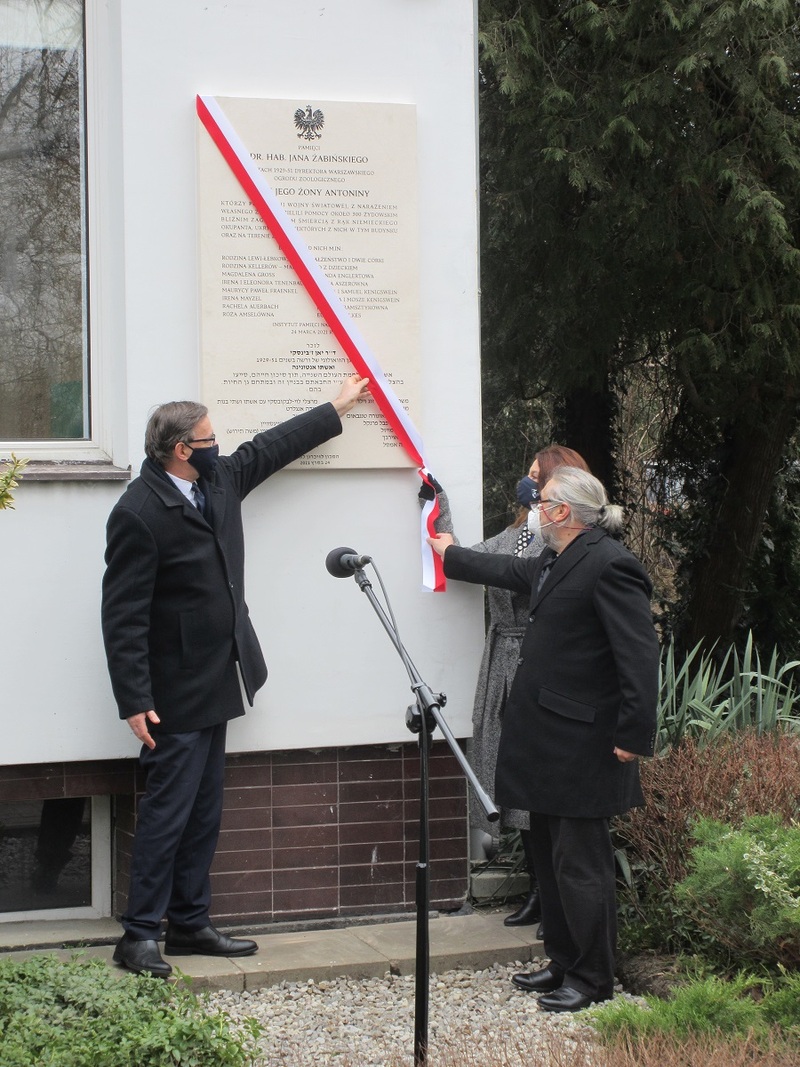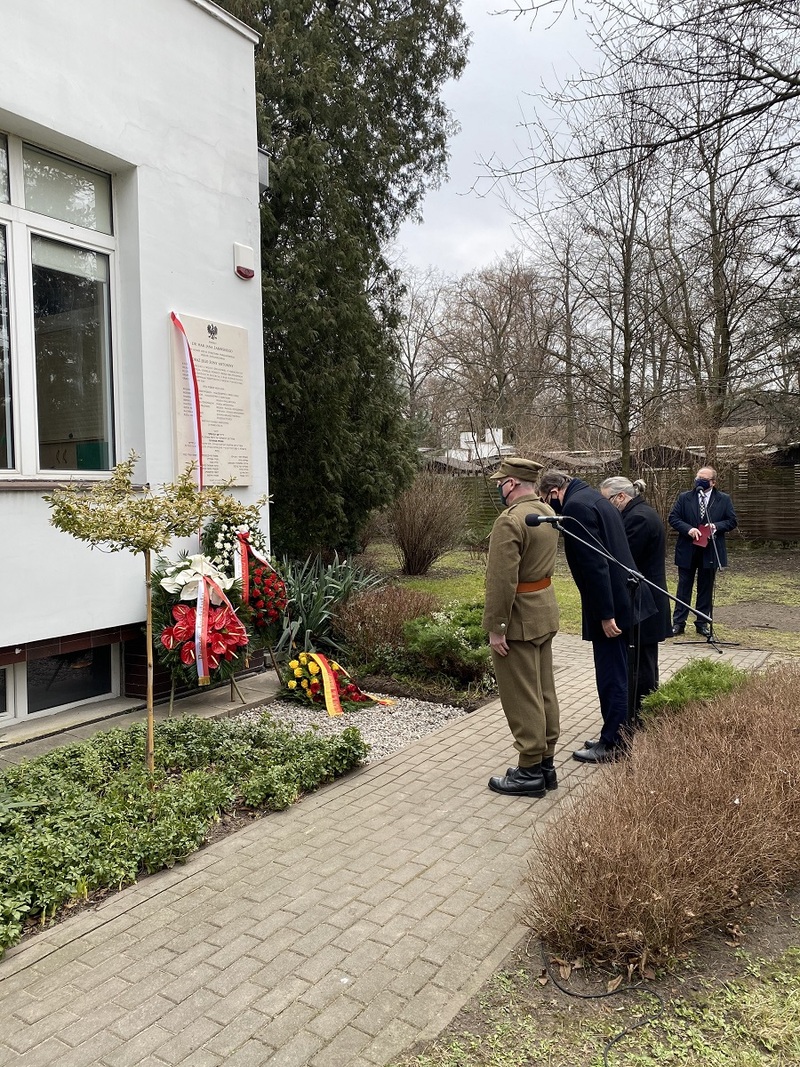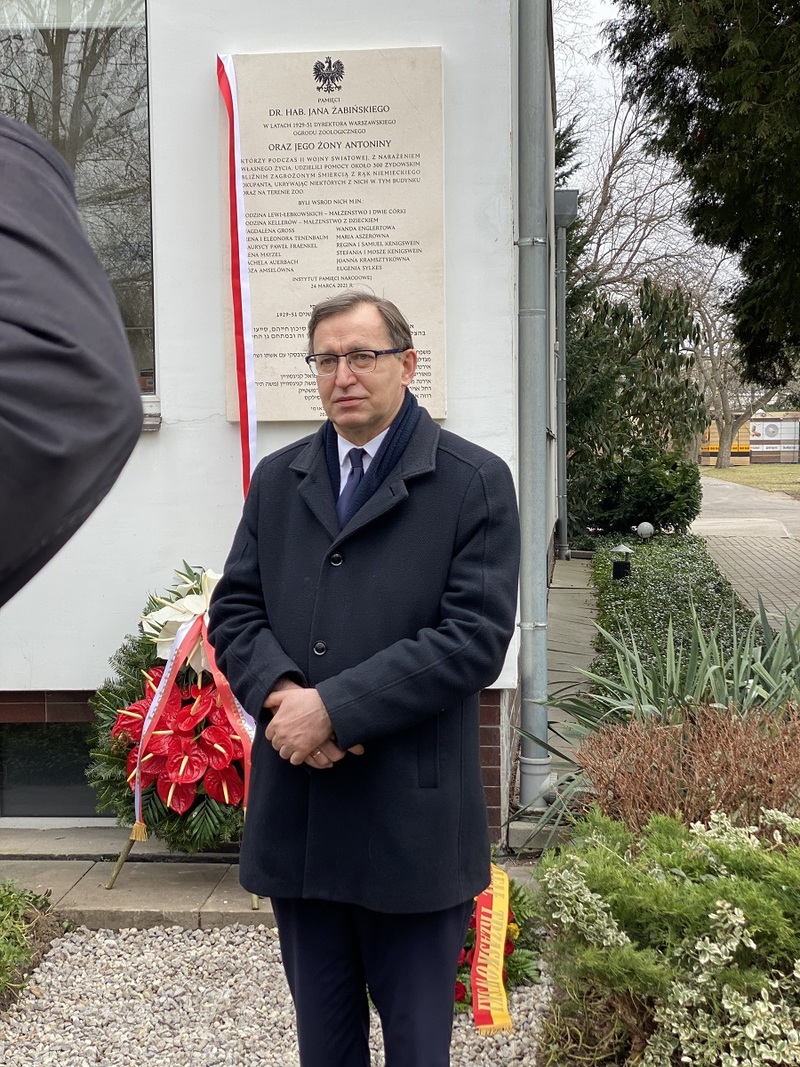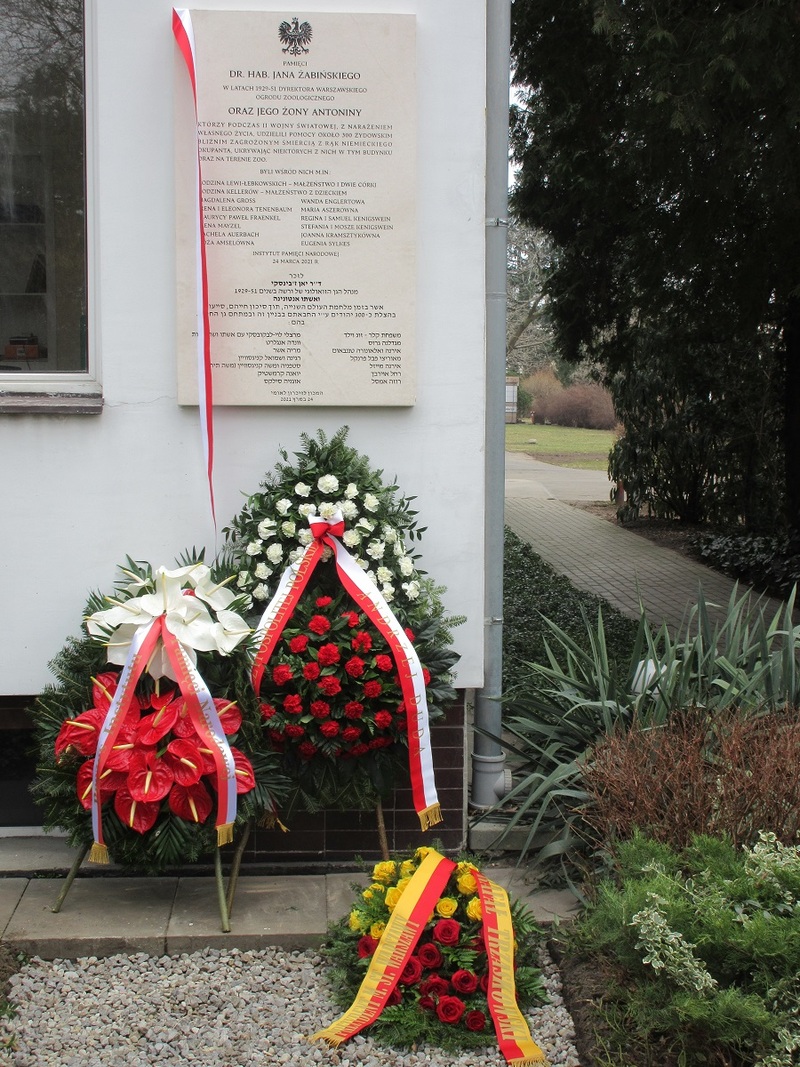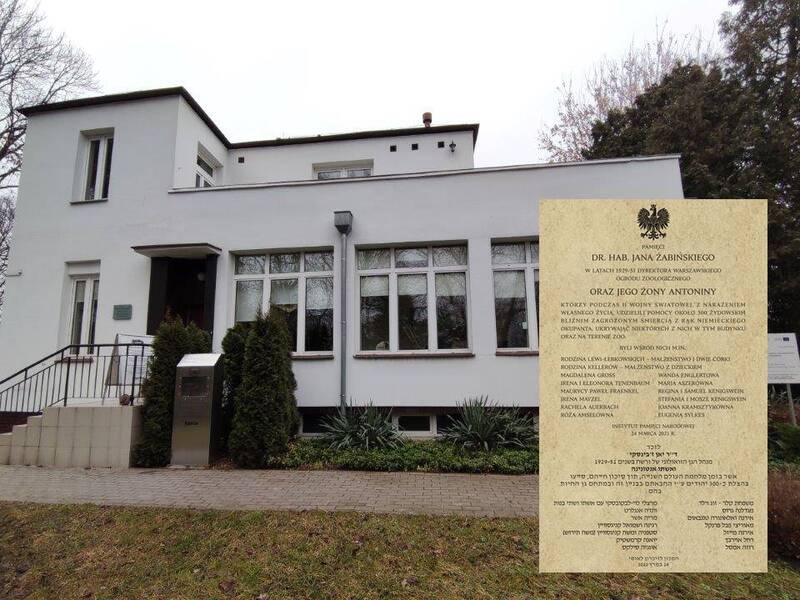In connection with the National Day of Remembrance of Poles Rescuing Jews under German occupation, the IPN’s President Jarosław Szarek, Ph.D., unveiled a plaque commemorating Jan and Antonina Żabiński – eminent Polish natural scientists honoured with the titles of Righteous Among the Nations. During the Second World War, the Żabińskis saved many Polish citizens of Jewish descent, providing them with shelter in the Warsaw Zoological Garden.
The plaque, funded by the Warsaw Branch of the Institute of National Remembrance, was installed on the walls of the "Villa under a Crazy Star" on the premises of the Warsaw Zoo.
At the ceremony, Jarosław Szarek said,
This modest plaque unveiled today tells the story of great people – great in their hearts and love – the story of the director of the Warsaw Zoo, Jan Żabiński and his wife Antonina. Here, in this villa, at a time when Poland and many European countries were flooded by German evil, they built an ark, and let about 300 Jews - some of them listed on the plaque - board it. These people were fortunate to live to see the flood of evil back down. Nobody betrayed them, and the survivors could for years tell the story of their benefactors.
And added,
20 years after the war, the Żabińskis were honoured with the title of Righteous Among the Nations, and a few years ago, the story of their Ark was filmed in Hollywood by New Zealand director Niki Karo. The movie was shown in many countries of the world, and also in Polish cinemas. Today, this story returns to the place where it happened, where, within the walls of this villa, evil was defeated by the good that will stay with us forever.
***
Jan Żabiński (1897–1974) initially planned to study zoology in Belgium, but the outbreak of World War I held him in Warsaw. In 1919, he joined the recreated Polish Army and a year later took part in the Polish-Bolshevik war. He completed industrial and agricultural studies, and obtained the title of agronomy engineer at the Warsaw University of Life Sciences (completed with a Ph.D. in physiology in 1924). At this university, Żabiński conducted research at the Department of Zoology and Animal Physiology in the 1920s, and it was there that he met his future wife, Antonina Erdman (1908–1971), who worked as an archivist. Since 1926, he popularized knowledge of animals and zoological curiosities in his talks on the Polish Radio. At the beginning of 1929, he took a job as director of the Zoological Garden in Warsaw, established a year earlier, which he kept for over 20 years. In 1931, the Żabińskis moved to a villa located on the premises of the zoo, where Jan had a studio and where Antonina took care of young animals and wrote articles and natural science books.
When the war began, the couple got involved in the resistance. During the bombing of the capital city, many animals died or escaped from the garden, and weapons and ammunition were hidden in the deserted pavilions and enclosures. Many people also found shelter there. Later on, Jan Żabiński, as a person associated with the Department of Horticulture, obtained from the Germans a pass to enter the ghetto, which he used to smuggle false documents and lead people out to the Aryan side. Although not members of the "Żegota" Polish Council to Aid Jews, the Żabińskis worked with it closely. The people who had escaped from the ghetto or had to leave the hideout in the Aryan part of the city, came to them for help; the persecuted hid not only in the garden, but also in all rooms of the Żabińskis’ house, from the basement to the attic. In times of danger, an aria from the opéra bouffe "La belle Hélène" by Jacques Offenbach was played or hummed, which was a warning signal to the hiding people.
In August 1944, Jan Żabiński took part in the Warsaw Uprising as a platoon commander in one of the companies within the "Kiliński" battalion. After its fall, he was deported to a prisoner-of-war camp in Germany. Having returned to Warsaw at the end of 1945, he set about rebuilding the destroyed zoo, and managed it until 1951. In later years, he taught animal physiology at one of universities in Warsaw, and published several popular science books.
In 1965, Jan and Antonina Żabiński were honoured with the titles of Righteous Among the Nations, and in 2008, posthumously awarded the Commander's Crosses of the Order of Polonia Restituta.
Among the people sheltered by Jan and Antonina Żabiński were Irena Tenenbaum (daughter of Jan Żabiński's friend), Szymon Tanenbaum, Ph.D. (entomologist), Róża Amselówna (associate of the bacteriologist and immunologist Professor Ludwik Hirszfeld), Magdalena Gross (sculptor), Maria Aszerówna (writer, translator, journalist, social and political activist), Rachela Auerbach (translator, writer and historian), as well as Maurycy Pawel Fraenkel, Wanda Englertowa, Eugenia Sylkes, Joanna Kramsztykówna. It is estimated that Jan and Antonina Żabiński helped about 300 people.
The memoirs "People and Animals" by Antonina Żabińska, released for the first time in 1968, inspired Diane Ackerman to publish "The Zookeeper's wife", a book devoted to the unusual history of the Żabińskis. In 2017, if was put on screen by Niki Caro.
